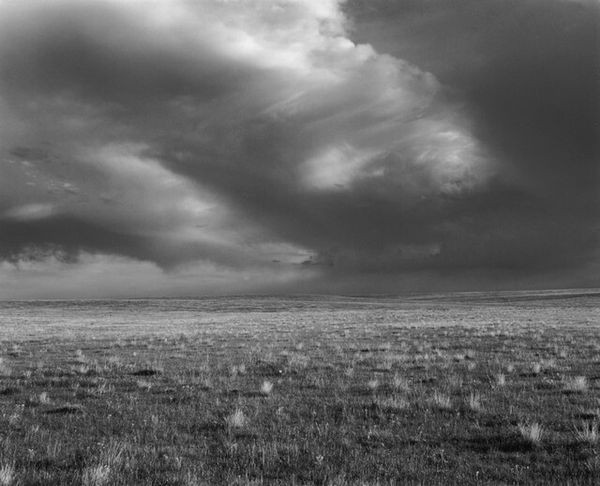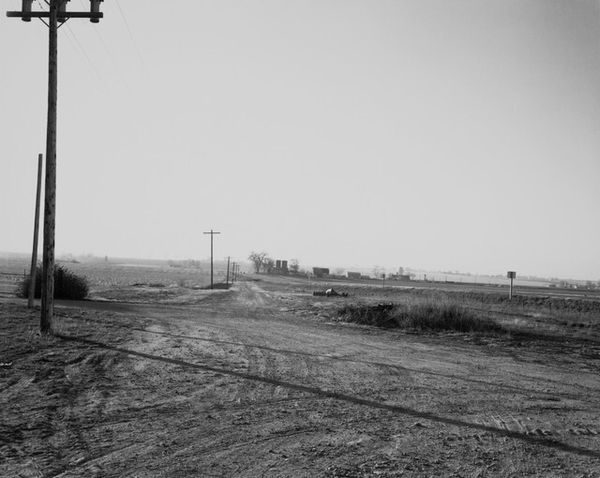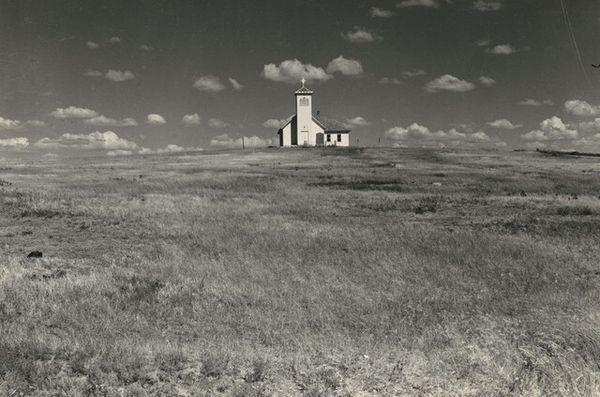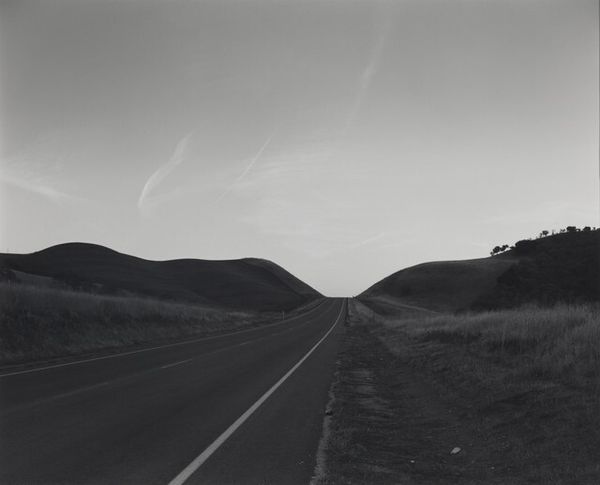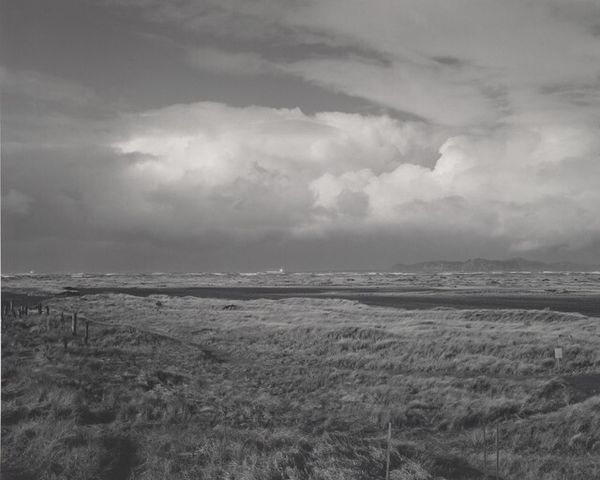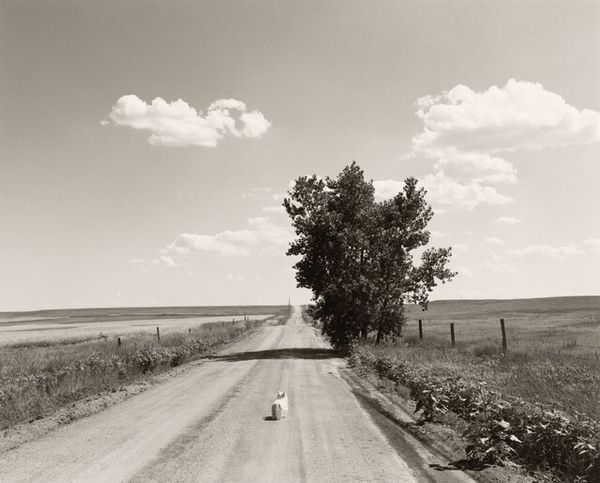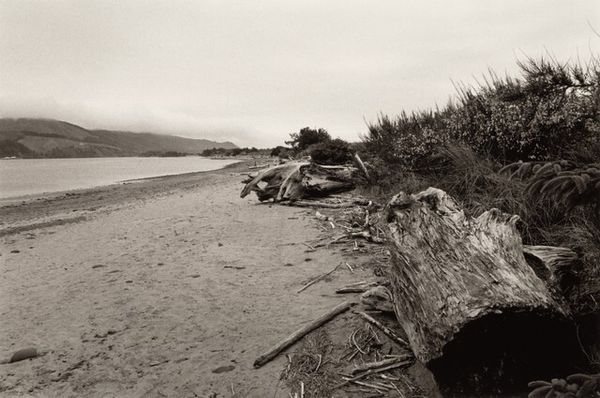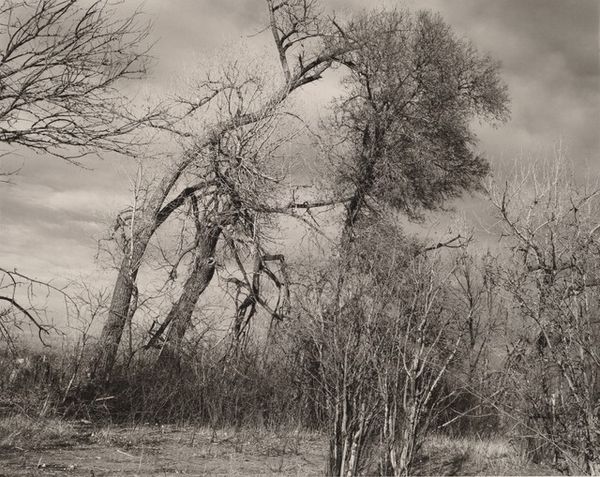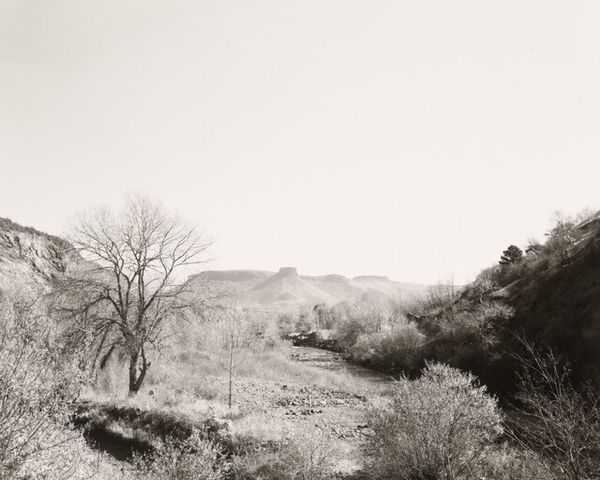
Summer, early morning, an immigrant cemetery. North of Bethune, Colorado 1965
0:00
0:00
photography, gelatin-silver-print
#
conceptual-art
#
black and white photography
#
landscape
#
monochrome colours
#
photography
#
black and white
#
gelatin-silver-print
#
monochrome photography
#
monochrome
#
realism
#
monochrome
Dimensions: image: 10.4 × 15.24 cm (4 1/8 × 6 in.) sheet: 10.95 × 15.9 cm (4 5/16 × 6 1/4 in.)
Copyright: National Gallery of Art: CC0 1.0
Curator: This gelatin silver print, taken in 1965 by Robert Adams, is titled "Summer, early morning, an immigrant cemetery. North of Bethune, Colorado." It depicts a stark and quiet scene. What are your initial thoughts? Editor: My first impression is the incredible stillness and sparseness. It’s bleak but there is something comforting too in its quietude, I think perhaps the scale - such an expansive landscape. Curator: That aligns with Adams's broader project: documenting the transformed American West and reflecting on its social and environmental impact. He very deliberately uses black and white. What might that choice do here? Editor: The grayscale certainly reinforces that sense of starkness. Without color, you really focus on the textures: the rough-hewn stones of the markers, the waving prairie grass, the grain of the film itself, the way the sky glows – all of which feels very honest in documenting what remains. It's almost an archaeological record. You know? Curator: I do. And this points to a wider narrative. Bethune, Colorado, experienced a significant influx of European immigrants in the late 19th and early 20th centuries. Many of these settlers were German and Russian farmers who sought land and new opportunities, but found it tough in reality. This is not a happy picture. Editor: Exactly. The photograph seems less about the individual lives represented by the headstones, but more a monument to the hopes and hardships inherent in that history. Were those grave markers all crafted locally, or brought from elsewhere, do you know? Curator: Records aren't always accurate or complete, but the ironwork in the cemetery is an interesting element pointing to either local manufacture or brought in on the trainlines reaching West. The land itself is clearly not productive anymore – or the labour is no longer there. The landscape has reclaimed its space. Editor: It really speaks to the fragility of settlement and agriculture, how even the most solid intentions can eventually fade back into the land from which they came. There’s something universal in its message of course. Curator: And ultimately Adams invites us to reflect on how landscapes bear witness to our histories and shape our collective identity. Editor: Well, for me, I think I leave this with the stark reminder of our fleeting impact on the material world.
Comments
No comments
Be the first to comment and join the conversation on the ultimate creative platform.
